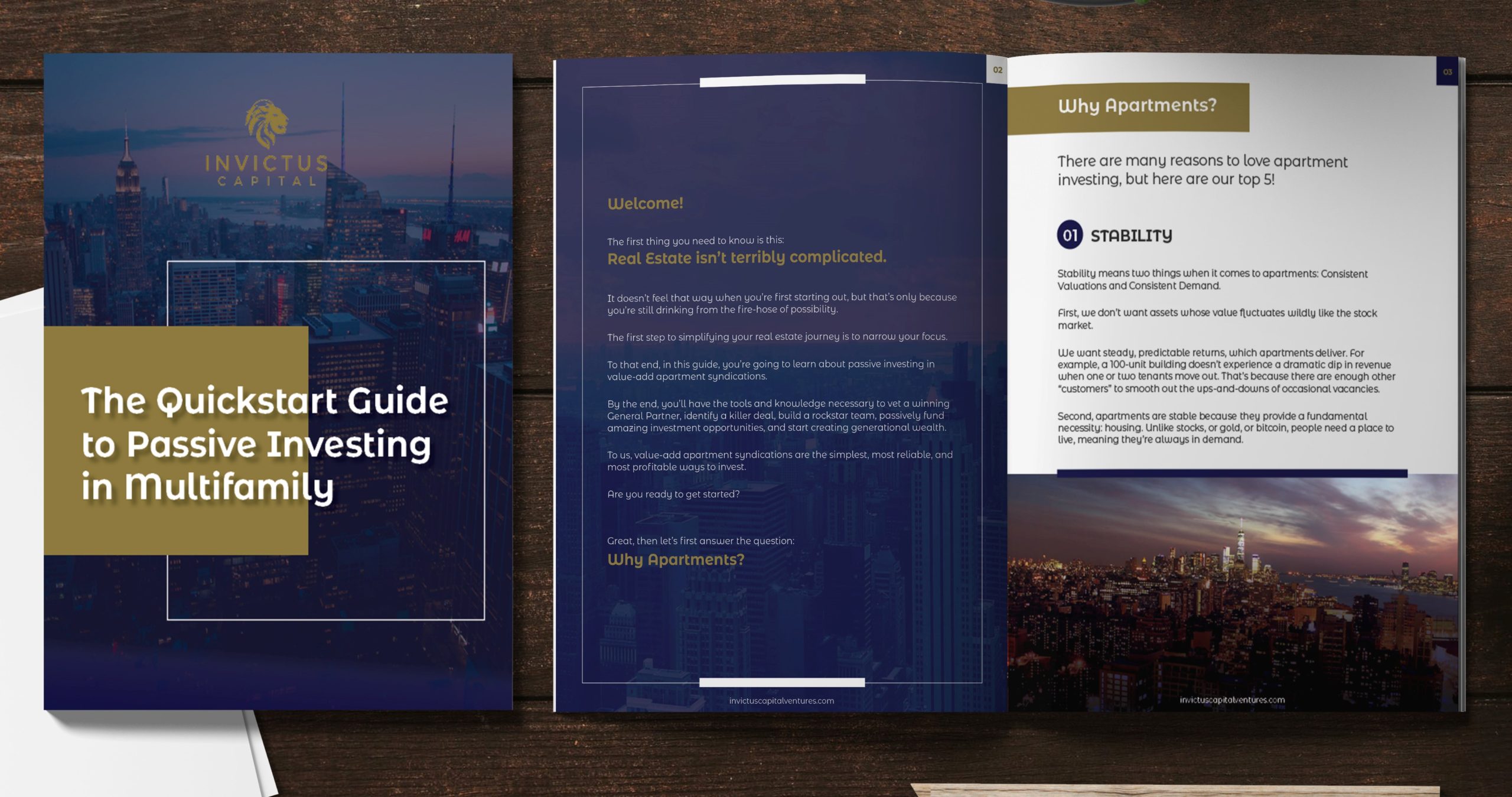
Structuring Your Next Multifamily Deal Correctly (Joint Venture vs Syndication)
Is It a Joint Venture or a Syndication?
Someday a great deal will come across your desk. The numbers will look great, the sub-market is on fire, the building itself is in fantastic shape with below-market rents due to overly passive operators.
Everything is going to look perfect…except one thing.
You don’t have enough money sitting in the bank to close the deal.
Between the down payment, the closing costs, the cap-ex, and the bank liquidity requirements, you just can’t get there on your own.
Now, you can do what most people do and bury your head in the sand and just give up.
Nobody would fault you for this. It takes money to make money, right?
Maybe next time, kid.
Then again, some of the best real estate investors in the world started exactly where you are now. Somehow they found a way through, so why not you?
There are so many creative ways to get involved in real estate. It’s one of the things that makes this investment vehicle so amazing.
You are only limited by the breadth of your creativity and the depth of your persistence.
So let’s get creative, refuse to accept defeat, and talk about two of the more common ways investors pool resources to take down big assets…the Joint Venture and Syndication.
The Joint Venture and the Syndication are two of the most common partnership structures, and on the surface, they look quite similar.
Do not be deceived, however, for there are a few key distinctions that may seem small, but carry big consequences.
With that said, let’s quick get the legal disclaimer out of the way: We are not legal experts and are not providing you with advice as to which structure you should use. Consult with your lawyer before making any decisions about which structure is right for you.
Joint Venture
A Joint Venture is the partnering of two or more investors. Perhaps one partner has a bunch of time and experience, but no money. And the other partner has a bunch of money, but not a ton of experience.
These two theoretical investors might get together with one partner bringing the money to the table and the other partner bringing the experience and time to the table.
Joint Ventures are not limited to two partners, by the way. You could slam a whole bunch of partners into a JV, as long as each partner does this one thing…
And it’s a critical one thing. It’s non-negotiable, so pay close attention, because this is where many, many, many JV’s go wrong:
Each partner in a Joint Venture must play an active role in the investment.
That’s right. Nobody is allowed to be purely passive in a Joint Venture.
In the early days of a lot of investor’s career, they’ll go to a family member or a friend with the proposition of a Joint Venture. That family member or friend puts some money into the deal, but otherwise just sits back and does nothing.
This is technically illegal, but many operators get away with it because unless something goes horribly awry in the deal, and one of the partners decides to get litigious, it’s unlikely the SEC is ever going to catch wind of your structure.
Still, you’re playing with fire.
How to get around this? Well, the simplest solution is to just make sure all the partners play some sort of active role in the investment.
That is, each investor must be involved in the ongoing maintenance of the asset, must possess a named role in the deal, and can actually prove they performed the duties as described in their job descriptions.
An example would be if three individuals got together to partner on a real estate investment. One individual may be doing the rehab/maintenance work. The other one may be responsible for property management. And the third may be the individual who found the deal and lined up the financing with the lender. All three individuals have defined roles and are actively working on the project. And since they are all managers, they have unlimited liability. Any decisions need to be done by majority rule and a single person cannot override the other two.
The other option, if you have a partner who is incredibly work-averse, is to structure your partnership as a Syndication, which does allow for passive investors to participate.
Syndication
There are four questions you need to answer to know which structure is appropriate to your partnership. If the answer to each question is yes, you need to structure as a syndication.
- Is there an investment of money?
- Is there an expectation of profits from the investment?
- Is the investment of money in a common enterprise? (that is, investors pooling their money or assets together to invest in a project?)
- Do any profits come from the efforts of a promoter or third-party?
Honestly, the distinction between Joint Ventures and Syndications is realized exclusively in that fourth question.
If somebody passively invests in your deal, it’s a syndication. It’s that simple.
At this point, you’ll need to register your offering with the SEC because what you really have on your hand is a Security, and ther are some very specific dos-and-do-nots where securities are concerned.
It’s at this point you should definitely seek out the assistance of an SEC attorney, which, yes, will cost you a good chunk of change, but it’s imperative you get all your ducks in a row and execute a syndication in accordance with the law.
If you don’t, well, the consequences far outweigh the small expense of just hiring a lawyer in the first place.
Conclusion
So all told, Syndications and Joint Ventures can look a whole lot like one another depending on how they’re structured.
Now that you know the key distinctions, however, you’ll always be able to pick the right structure for your deal.
If you still have questions about the nuances between these two structures, shoot me an email at anthony@invictuscapitalventures.com!

